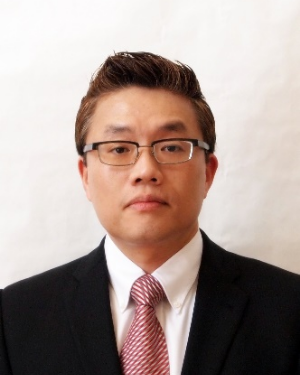Dr. Kiran Gunnam
Distinguished Engineer – Machine Learning & Computer Vision, Western Digital, USA.
https://www.linkedin.com/in/kirangunnam
Dr. Gunnam is an innovative technology leader with vision and passion who effectively connects with individuals and groups. Dr. Gunnam’s breakthrough contributions are in the areas of advanced error correction systems, storage-class memory systems, and computer vision-based localization & navigation systems. He has helped drive organizations to become industry leaders through ground-breaking technologies. Dr. Gunnam has 75 issued patents and 100+ patent applications/invention disclosures on algorithms, architectures, and real-time low-cost implementations for computing, storage, and computer vision systems. He is the lead inventor/sole inventor for 90% of them. Dr. Gunnam’s patented work has already been incorporated in more than 2 billion data storage and WiFi chips and is set to continue to be incorporated in more than 500 million chips per year.

Dr. Gunnam is also a key contributor to the precise localization and navigation technology commercialized for autonomous aerial refueling and space docking applications. His recent patent-pending inventions on low-complexity simultaneous localization and mapping (SLAM) and 3D convolutional neural network (CNN) for object detection, tracking, and classification are being commercialized for LiDAR+camera based perception for autonomous driving and robotic systems.
Dr. Gunnam received his MSEE and Ph.D. in Computer Engineering from Texas A&M University, College Station. He is world-renowned for a balance between strong analytical ability and pragmatic insight into the implementation of advanced technology. He served as IEEE Distinguished Speaker and Plenary Speaker for 25+ events and international conferences and more than 3000 attendees in the USA, Canada, and Asia benefited from his talks.
Dr. Francisco García-Herrero
Professor, ARIES Research Centre, Universidad Nebrija, Spain.
https://ieeexplore.ieee.org/author/38296810300
Francisco Garcia-Herrero received the B.Sc. degree in telecommunication engineering from the Escuela Politecnica Superior de Gandia, Spain, in 2008, and the M.S. and Ph.D. degrees in electrical engineering from the Universitat Politècnica de València, Spain, in 2010 and 2013, respectively.
Francisco Garcia-Herrero has worked as a Lecturer and a Researcher at several universities, including the European University Miguel de Cervantes and the Universitat Politècnica de València.
Francisco Garcia-Herrero is currently an Associate Professor and a Researcher with the Universidad Antonio de Nebrija.
His research interests include hardware and algorithmic optimizations of error-control decoders and fault-tolerance electronics in communication and storage systems.

Dr. Seong Kim
Senior Director and Distinguished Engineer, Data Center Architect at Xilinx, USA.
https://www.linkedin.com/in/seonghkim
Dr.Seong Hwan Kim is a Sr. Director at Xilinx and leading the datacenter systems architecture team. His key focus areas include accelerating workloads in Datacenter Compute, Network, and Storage platforms, defining solutions utilizing various Xilinx FPGA platforms. His recent acceleration objectives are creating clear value propositions for Smart World applications utilizing Xilinx ML inference and video transcoding technologies.
In addition to this Smart World application acceleration, database acceleration, computational storage, HPC, Fintech, and smart NIC are other focus areas. Prior to his current role, he served as a system architect at AMD, LSI/Agere, and Lucent Technologies. He has more than 25 years of industry and research experience in the field of networking and data center computing. He holds a Ph.D. degree in Electrical Engineering from the State University of New York at Stony Brook and an M.B.A from Lehigh University. He has 12 patents and more than numerous conference and journal papers.

Mr. C Ashok Kumar Reddy
Architect at Samsung Electronics, India.
https://www.linkedin.com/in/ashokreddy333
ASHOK KUMAR REDDY CHAVVA (M’05– SM’14) received an M.E degree in telecommunication engineering from the Indian Institute of Science, Bangalore, India, in 2005. In June 2005, he joined a wireless startup Beceem Communications which developed the first 4G system based on WiMAX. Here, he was involved in developing physical layer algorithms for broadband wireless systems. Broadcom later acquired this team.
He worked with Broadcom till November 2013. Since November 2013, he has been with Samsung R&D Institute India Bangalore, India currently leads an R&D team that works on differentiating mobile devices. His research interests include algorithm design for the physical layer, performance evaluation of wireless communication systems for Beyond-5G and 6G systems, and machine learning for communications. He received the best paper award at IEEE CCNC, Las Vegas, USA, in 2016 and the best paper (third) at IEEE World 5G Forum, 2020.

Dr. Chris Dick
R&D Engineering at the Intersection of 5G and AI at NVIDIA San Jose, California, United States.
https://www.linkedin.com/in/chrisdick-bb18873
Dr. Chris Dick joined NVIDIA in 2020 where he is a wireless architect and the technical lead for the application of Artificial Intelligence and Machine Learning to 5G and 6G wireless. From 1998 to 2020 he was a Fellow and the DSP Chief Architect at Xilinx.
In his 30 years working in signal processing and communications he has delivered silicon and software products for 3G, 4G and 5G baseband DSP and Docsis 3.1 cable access. He has performed research and delivered products for digital front-end (DFE) technology for cellular systems with a particular emphasis on digital pre-distortion for power amplifier linearization. Chris has also worked extensively on silicon architecture and compilers for machine learning.
Prior to moving to Silicon Valley in 1998 he was a tenured academic in Melbourne Australia for 13 years. He has over 200 publications, 70 patents and is an adjunct Professor at Santa Clara University University where he has taught courses on real-time signal processing and machine learning for 18 years. In 2018 he was awarded the IEEE Communications Society Award for Advances in Communication for research in the area of full-duplex wireless communication.

Designed by MNV HARSHA VARDHAN
